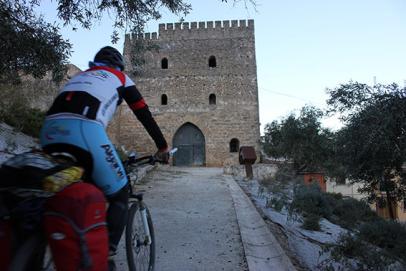Some parts of Xàtiva’s defensive city wall, which used to connect the castles El Mayor and El Menor with the city, remain well-preserved. Some of the parts of the wall and turrets that are still standing were built by the Arabs, whereas some others are examples of Gothic style. The oldest parts of the wall date back to the 11th century. It needs to be noted that the walls were restored and improvements were made after the Christian reconquest of Spain in the 12th and 13th century. Alterations were made again in the 16th century. At the end of the 19th century, the parts of the wall that impeded the development and growth of the city were destroyed.
Some of the most interesting parts of the city wall can be seen along the path climbing up to the castle and in a part of the town situated completely on the other side of the castle: in Avenida Selgas, which is located next to Jardín del Beso.
Xàtiva is mentioned in several lines of El Cantar de Mío Cid. In one of those lines, the poet says that after the battle of Sagunto, El Cid rode on raids at night all over the region of Valencia, taking the cities of Cullera, Xàtiva and Denia. The poet also says that had El Cid hardly taken possession of Valencia, when the Moorish king of Seville brought a host of 30,000 men to try to retake Valencia. In spite of sundry attempts on the part of the Moors to recover possession of so important a stronghold, El Cid and his men vanquished the Moors in a battle fought in the orchards of Valencia, that is, in the outskirts of the city. El Cid plagued the Moors until reaching the city walls of Xàtiva.
The historical links between El Cid and Xàtiva differ from the manner in which events are narrated in El Cantar. In 1091 El Cid established a large protectorate over the Levante region, so that the town of Xàtiva, as well as Tortosa and Denia, became one of his tributaries. These three towns paid El Cid tribute of 50,000 dinars a year (Note that Valencia paid a tribute of 12,000 dinars). Yet, Rodrigo lost this tributary income shortly after, in 1092. The Almoravids, who had started in 1090 to gain positions and were moving from Tarifa forward, finally reached the area, so that El Cid lost his power.
The Almoravids were a nomadic tribe from north Africa who imposed their rule over al-Andalus in order to hold back both the Christian advance and the Muslim leaders in power of the taifas, whom they considered were not strict enough. The relationship between El Cid and Xàtiva was influenced by the Almoravid threat. In 1093, El Cid entered into a mutual assistance agreement with the Muslim leader so as to help each other in case of an Almoravid attack from the cities of Valencia and Corbera. One year after, in 1094, El Cid fought against the Almoravids in Cuarte, winning a victory. Some Muslim troops took refuge in Xàtiva, which became an important Almoravid bastion. Most of the Almoravid troops that fought against the army of Pedro I de Aragón and El Cid in the battle of Bairén (1097) left from Xàtiva.
Rev. PAB 27.12.18



